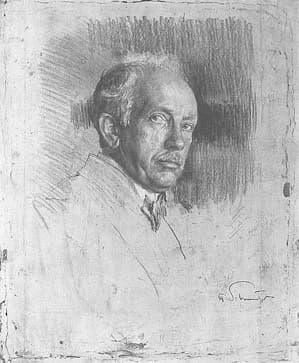John Philip Sousa, the so-called “March King” was a phenomenon of the entertainment world. Around the turn of the 20th century, he was quite possibly the best-known name in music. Audiences on both sides of the Atlantic were dancing his two-steps, bands everywhere were playing his marches, and he got very wealthy from sheet music and recording sales.
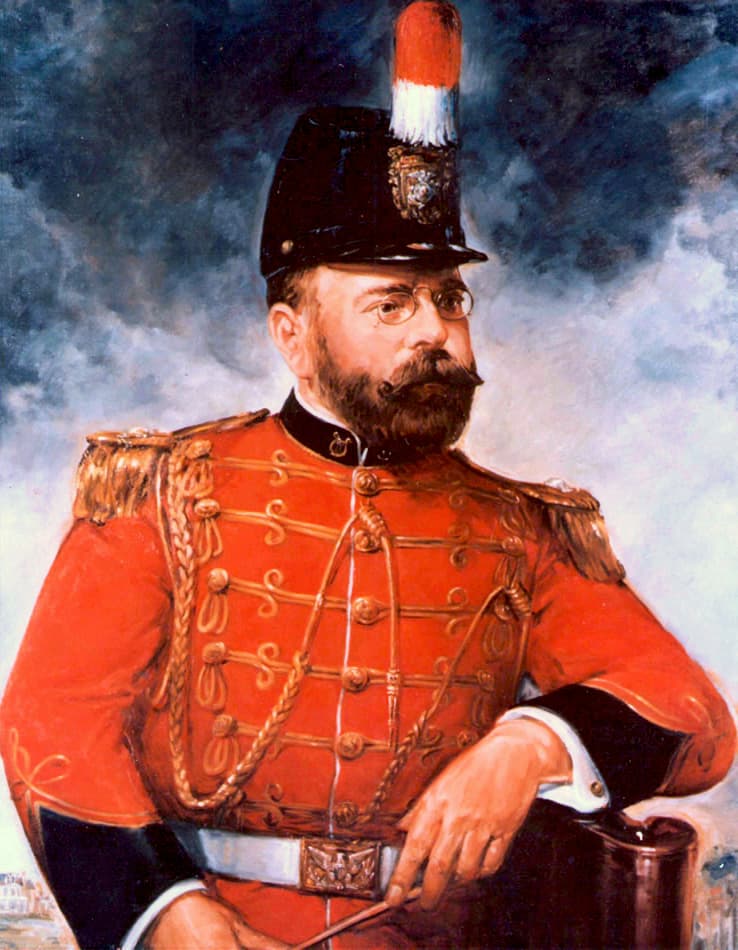
John Philip Sousa
Sousa, as you may know, is the composer of the official national march of the United States, “The Stars and Stripes Forever!” What you might not know is the fact that by the end of the 20th century, that march was recorded by more bands and orchestras than any other single piece of music ever written.
John Philip Sousa: The Stars and Stripes Forever
John Philip Sousa was born in Washington, DC, on 6 November 1854. The most important figure in the history of bands and band music was the son of immigrants. His father was born in Spain to Portuguese parents, and his mother was born in Bavaria.
Sousa was a sickly child, and initially educated at home. But he clearly had musical talent, as he studied singing, the violin, piano, flute, and several brass instruments. When he was ready to run off with a circus band, his father enlisted him as an apprentice musician in the US Marine Band at the age of 13. And, unsurprisingly, he tried his hand at composition.
John Philip Sousa: Semper Fidelis
Sousa is almost entirely known for his roughly 135 marches, but he composed a vast number of other music types as well, including operettas, songs, and suites. We thought it might be fun to listen to the Sousa suites, which prominently featured in his band concerts, but aren’t particularly popular today.

John Philip Sousa and his band
The Sousa suites represent a sort of middle ground between the classics and music for entertainment. A scholar writes, “Since the Sousa-style concert was much different from concerts presented today, it is perhaps understandable that the suites have fallen into a class known as period music. Some conductors who are champions of Sousa’s music are quick to point out that in many cases, this categorization is unjustified.”
John Philip Sousa: People Who Live in Glass Houses (Royal Norwegian Navy Band; Keith Brion, cond.)
All of Sousa’s suites tell stories in music, and many are downright funny. People Who Live in Glass Houses dates from 1909 and started as a humorous study for band. The inspiration, however, is found in various forms of alcohol and the nationalities associated with them. The opening movement is called “The Champagnes,” followed by “The Rhine Wines, “ The Whiskies-Scotch, Irish, Bourbon, and Rye,” and “Convention of the Cordials, Wines, Whiskies, and White Rock.”
It is said that Sousa much enjoyed a drink or two, and in 1923 when the alcohol debate reached fever pitch, Sousa inserted an additional movement “White Rock and Psyches” into his suite. He also rescored the piece as an orchestral ballets, and in that production dancers were dressed as large bottles symbolizing the various drinks.
John Philip Sousa: The Last Days of Pompeii (United States Air Force Heritage of America Band; Lowell Graham, cond.)
Sousa called The Last Days of Pompeii his finest composition and programmed it more often than any of his other suites. Supposedly, “he was particularly proud of the original descriptive effects, based on the 1834 novel The Last Days of Pompeii by Baron Edward Bulwer-Lytton. Scored in three movements, the opening “In the House of Burbo and Stratonice” depicts a pub with several men drinking and playing dice.
“Nydia” transports us into a world of light and love as the blind slave girl falls passionately in love with her owner, Glaucus, who, unbeknownst to her, is in love with another woman. “The Destruction of Pompeii and Nydia’s Death” features the eruption of Mount Vesuvius, which cloaks the city in darkness. Nydia can still navigate the streets, and she guides Glaucus and his lover to safety aboard a ship. However, when Nydia realizes that Glaucus’s heart belongs to another, she throws herself into the sea.
John Philip Sousa: At the King’s Court (Royal Artillery Band; Keith Brion, cond.)

John Philip Sousa
At the age of 26, Sousa became conductor of the U.S. Marine Band, and in the ensuing twelve years of service, he greatly improved the ensemble. Sousa, however, set up his own band in 1892 and took the world by storm. In its first seven years the band gave 3500 concerts; in an era of train and ship travel it logged over a million miles in nearly four decades. There were European tours in 1900, 1901, 1903, and 1905, and a world tour in 1910-11, the zenith of the band era.
Sousa was an astute businessman, and in preparation for the Sousa Band’s 1905 tour to England, where they played for King Edward VII at a command performance, he composed the suite At the King’s Court. In three movements, various female royalties are portrayed in a sophisticated orchestration featuring a prominent woodwind section, while the brass is scored sparingly. By essentially omitting the trombones, Sousa gives greater importance to the horn section, and the clarinets are frequently doubled by alto and tenor saxophones.
John Philip Sousa: Looking Upward (Royal Artillery Band; Keith Brion, cond.)
The inspiration for the first movement of the Looking Upward suite came on a crisp South Dakota night while Sousa was looking at the heavens from the window of his train. By the Light of the Polar Star borrows two melodies from the first movement of Act II of the operetta Chris and the Wonderful Lamp. The second movement “Under the Southern Cross” was inspired by an advertisement about the steamship Southern Cross.
The third movement is titled “Mars and Venus,” and opens with a pair of drum rolls, “which begin as whispers, slowly swell into thunderous roars and then diminish to the original whispers.” This was certainly a unique effect that must have surprised audiences, but we may never know precisely what Sousa had in mind.
John Philip Sousa: Three Quotations (Razumovsky Symphony Orchestra; Keith Brion, cond.)
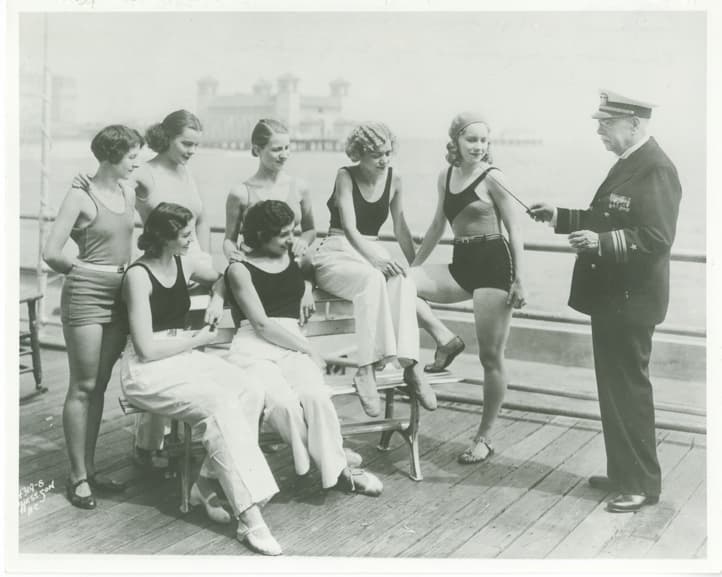
Sousa Conducting Atlantic City
John Philip Sousa had studied classical and popular music, and he was one of the most accomplished conductors of the day. He also was a perfectionist recruiting the most outstanding musicians by offering higher pay. We can get a glimpse of the technical excellence of the band by their constantly varied programs, when musicians played without rehearsal, and often using manuscript parts or transposing orchestral parts.
Sousa was a voracious reader, and he had an extensive library. His “Three Quotations” are surely to be found in some rare book in his personal library. The first quotation reads, “The King of France marched up the hill with twenty thousand men; the King of France marched down the hill and ne’er went up again.” A sensitive pastoral scene features in “I, too, was born in Arcadia,” and “In Africa” he imitates the musical characteristics of the continent with a hint of cakewalk and a reference to the spiritual.
John Philip Sousa: Impressions at the Movies (Royal Artillery Band; Keith Brion, cond.)
Composed in 1914 Impressions at the Movies is subtitled “Scenarios of Cinematographers.” From the 1915 programme note in the first published edition, we learn that Sousa wanted to express through music what is usually done by the written word. In the opening movement “The Serenaders” we are transported to a neighbourhood college campus, with college students delighting in serenading co-eds.
“The Crafty Villain and the Timid Maid,” finds the girl pleading for her safety while being pursued by a clever and relentless villain. The concluding “Balance All and Swing Partners” features a ragtime hoe-down depicting a dance on the village green. The music was considered interesting and original but not really in demand. The score was not published until 1922.
John Philip Sousa: Camera Studies (Central Band of the Royal Air Force; Keith Brion, cond.)
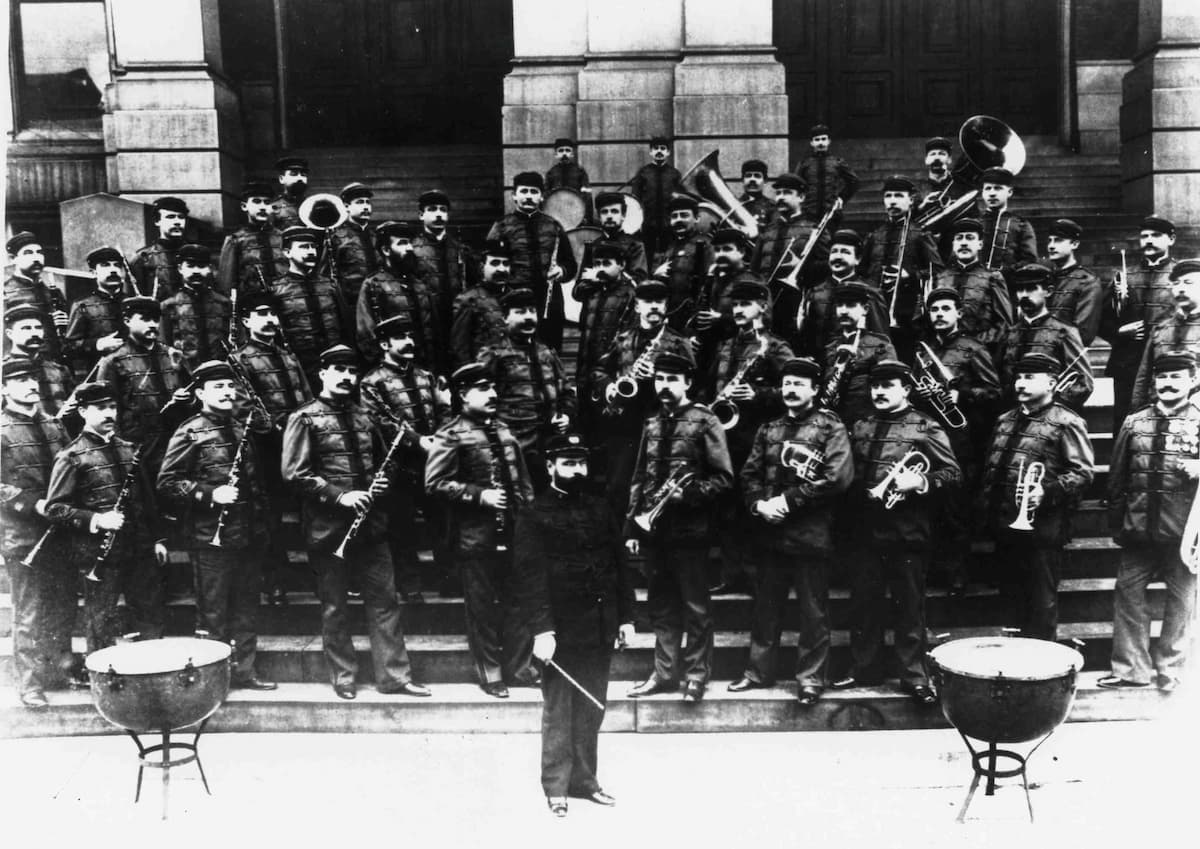
John Philip Sousa and his band, 1893
Although wealth clearly appealed to Sousa, he also wanted to create a new kind of musical organization that could compete artistically with the greatest European bands. He was also looking to present a novel repertoire and novel instruments to popular audiences. And that’s how he came up with the sousaphone, created by J. W. Pepper in 1893 under Sousa’s direction. Designed to be easier to play than the concerto tuba while standing or marching, it also carried the sound above the heads of the band.
We don’t know if the suite Camera Studies was inspired by actual photographs or simply originated in Sousa’s musical imagination. These inspirational snapshots were assembled in the summer of 1920. Sousa had composed the brilliant Spanish Dance “The Flashing Eyes of Andalusia,” and he later added a gentle intermezzo movement titled “Drifting to Loveland,” and a happy and optimistic “Children’s Ball” to complete the suite.
John Philip Sousa: Tales of a Traveler (Royal Artillery Band; Keith Brion, cond.)
The Sousa Band embarked on a world tour on 24 December 1910. It wasn’t the first band to travel around the world, but the publicity generated was immense. Sousa’s reputation and recordings preceded him, and he was welcomed as a conquering hero at every port. Sousa was just recovering from malaria to begin the journey, but in 1911 the troupe appeared in England, Ireland, South Africa, Tasmania, Australia, New Zealand, Hawaii, Western Canada, and the Midwestern U.S. before finishing the tour on 10 December 1911 in New York City.
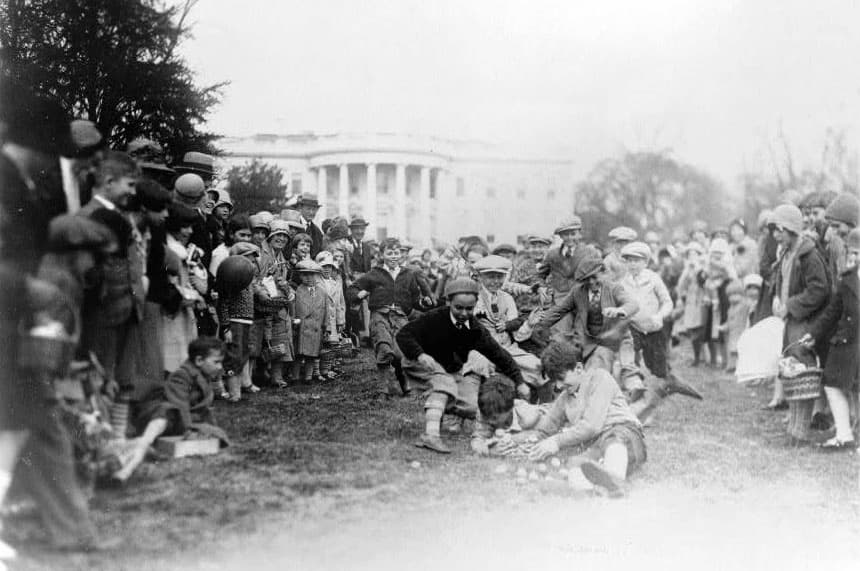
Easter Monday on the White House Lawn
Tales of a Traveler reflect some musical inspirations from that landmark tour. The opening movement “The Kaffir on the Karroo” presents native dances of the Karroo in South Africa, while the romantic waltz from the “Land of the Golden Fleece” originates in Australia. Originally, the final movement was a “Coronation March” referencing King George V, but it was never performed for that purpose. Several years later, Sousa composed a substitute movement called “Easter Monday on the White House Lawn” as the concluding number of the suite.
John Philip Sousa: Leaves from my Notebook (Royal Swedish Navy Band; Keith Brion, cond.)
Leaves from My Notebook was dedicated to the “Campfire Girls of America,” who showered Sousa with gifts and honours as he toured the country with his band. The lovely waltz ballade is dedicated to “The Campfire Girls,” while the opening “Genial Hostess” is a busy musical portrait. The most interesting movement, in terms of title, is surely the concluding “Lively Flapper.”
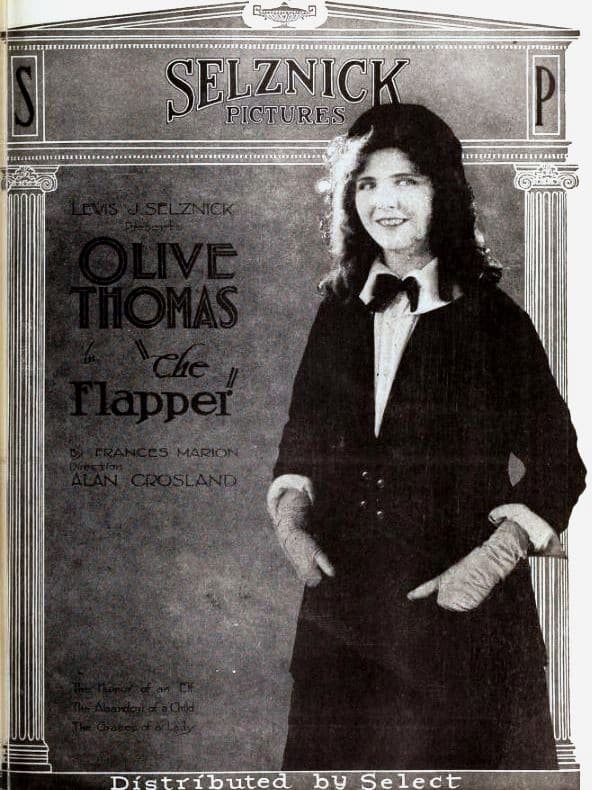
The Flapper, 1920
During the 1920s, “Flappers” was the name given to young women known for their energetic freedom and breaking with conventions and barriers. The first generation of independent American women, “flappers aspired for economic, political, and sexual freedom for women.” They wore short “bob” hairstyles and short skirts to show off their legs and ankles, with cigarettes dangling from painted lips. They drank alcohol, rode in and drove cars, and kissed and “petted” with different men.
John Philip Sousa: Maidens Three (Royal Swedish Navy Band; Keith Brion, cond.)
Staying with young women for a bit, the Maidens Three Suite is actually not a dedicated suite but a collection of previously composed works. “The Coquette” dates from 1887 and is a short caprice that Sousa frequently accompanied with a quotation from a German poem:
I know a maiden fair to see,
Take care! Take care!
She can both false and friendly be,
Beware! Beware!
“The Summer Girl” originated with music from his operetta Chris and the Wonderful Lamp, and “The Dancing Girl” is a tarantella extracted from Sousa’s operetta The Bride Elect.
Sousa strongly believed that a symphony orchestra represented too many confining elements of a certain tradition. He never wanted to perform “ponderous symphonies” or “massive preludes,” but believed that “entertainment is of more real value to the world than technical education in musical appreciation.” He sought an original and innovative approach to performance and programming, and “wanted to avoid those musical combinations governed by certain laws and institutions which he felt would cater to the many rather than the few.” Innovation and popularity were the two goals that dominated his musical activities.
During a 1924 vacation in Havana, Sousa was inspired to compose the colourful suite Cubaland. Each movement depicts the rule of Cuba under different governments, Spain, the United States, and finally Cuba. Whatever you think of the Sousa suites, they sound highly infectious music that makes me want to dance and march. I think, Sousa was a genius.
For more of the best in classical music, sign up for our E-Newsletter
John Philip Sousa: Cubaland (Royal Artillery Band; Keith Brion, cond.)

